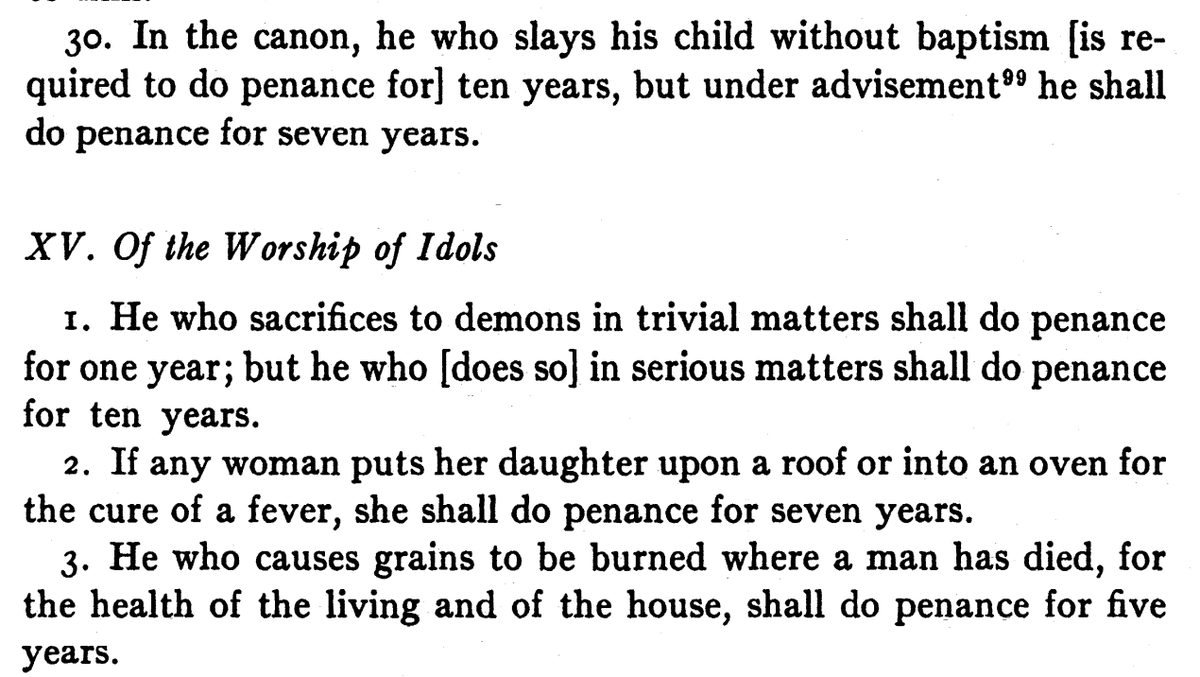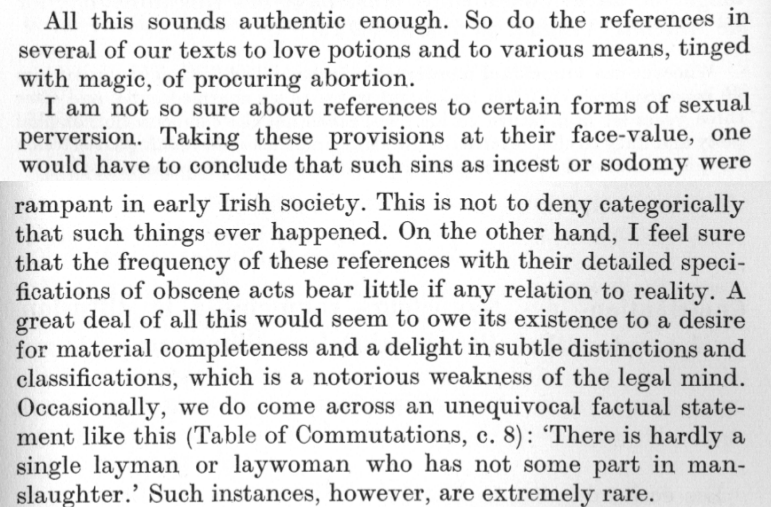Erik Wade ( @erik_kaars ) again, back with a short thread on the love of my life: penitentials. Penitentials are medieval manuals for confessors. They basically list sins with suggested penances. We have no idea how common the sins they describe were. #MedievalTwitter
The penitentials are one of the the only theological movements to start at the edge of the Roman Church (in Ireland), then move to the center
Many scholars argue that the penitentials don& #39;t represent common practice (when it comes to same-sex practices). https://abs.twimg.com/emoji/v2/... draggable="false" alt="🙄" title="Gesicht mit rollenden Augen" aria-label="Emoji: Gesicht mit rollenden Augen">
https://abs.twimg.com/emoji/v2/... draggable="false" alt="🙄" title="Gesicht mit rollenden Augen" aria-label="Emoji: Gesicht mit rollenden Augen">
Many scholars argue that the penitentials don& #39;t represent common practice (when it comes to same-sex practices).
Ludwig Bieler, who edited the irish penitentials in the 1970s, claimed that most references to sodomy were probably invented, but he believed it when a penitential stated that, for instance, *every person in medieval Ireland had been involved in a murder.*
My work focuses on the first English penitential, the Penitential of Theodore, which is a compendium of the decisions of Archbishop Theodore, a Byzantine monk (from what is now Turkey), who became the first archbishop of England in the 600s.
(I am such a Theodore nerd that I made a twitter bot that tweets out random lines from his penitential : @DiscipulusU - it will even assign you a penance if you tweet at it)
My work is basically focused on the Byzantine origins of Theodore& #39;s theological decisions in the penitentials. Most discussions of his penitential ignore his background, despite heavy evidence that it influenced his work.
No work traces the possible influence of Theodore& #39;s constant companion, Abbot Hadrian, an African monk & brilliant scholar who never strayed from Theodore& #39;s side & gave Theodore advice on everything. @ISASaxonists has written about Hadrian& #39;s erasure. https://medium.com/@mrambaranolm/anglo-saxon-studies-academia-and-white-supremacy-17c87b360bf3">https://medium.com/@mrambara...
I study how Byzantine ideas about sex shape Theodore& #39;s ideas of sex. My most recent work shows that his penitential is the first surviving place in English lit where someone compares bestiality to male homosexuality, a comparison from Byzantine theology. https://online.ucpress.edu/jmw/article/2/1-2/11/110810/The-Beast-with-Two-BacksBestiality-Sex-Between-Men">https://online.ucpress.edu/jmw/artic...
BUT that comparison isn& #39;t made to make male homosexuality sound bad. It& #39;s to make *bestiality* sound bad. Before this, bestiality is considered a minor sin, like masturbating. Sex between men is ALWAYS considered severe. Bestiality was not.
(BL, MS Royal 13 B VIII, f. 19v)
(BL, MS Royal 13 B VIII, f. 19v)
After Theodore& #39;s penitential first compares bestiality to male homosexuality, bestiality acquires a serious reputation and eventually becomes considered one of the worst sexual sins.
(Paris, BnF, Arsenal 5069, f. 149v)
(Paris, BnF, Arsenal 5069, f. 149v)
One more point about Theodore& #39;s Penitential: it& #39;s based on his judgments, given to lay people and clergy who asked him questions. Someone wrote those down. That means that it DOES reflect what 7th-century people were doing sin-wise. See my article: https://scholarworks.wmich.edu/tmg/vol4/iss2/2/">https://scholarworks.wmich.edu/tmg/vol4/...
Why is this significant? Well, because it& #39;s the first penitential that discusses what *women* do. And there is a passage where the Penitential mentions that one part is based on an actual case where a woman asked Theodore for advice on a spiritual crisis on getting remarried.
This suggests several things:
-7th-century Englishwomen, even lay ones, had deep spiritual concerns
-These were taken seriously by everyone
-The many references to women in the penitential probably reflects the many women who petitioned Theodore.
-7th-century Englishwomen, even lay ones, had deep spiritual concerns
-These were taken seriously by everyone
-The many references to women in the penitential probably reflects the many women who petitioned Theodore.
This makes his Penitential one of the few surviving glimpses into the private lives and religious lives of ordinary people, including ordinary women, in England in the late 600s. Theodore answered their questions by drawing on Byzantine theology, creating an English theology.

 Read on Twitter
Read on Twitter







